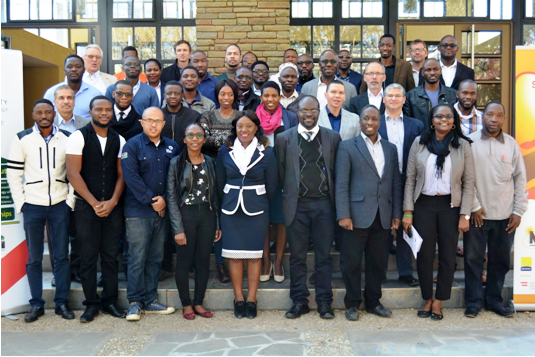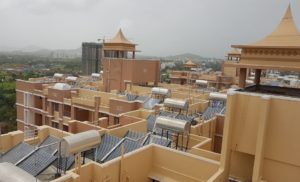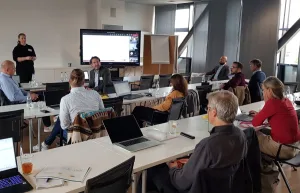
Namibia’s path to a solar thermal future
 The Namibia Solar Thermal Technology (STT) Roadmap outlines the country’s path to 1.5 million m² of collector area by 2030. The aim is to have an average 0.5 m² installed per inhabitant by then (see the attached document). During a workshop in Windhoek last June, stakeholders from policy and administration voiced their unequivocal support for the implementation of the STT Roadmap 2030, which was developed by a consortium of experts and funded by SOLTRAIN, the Southern African Solar Thermal Training and Demonstration Initiative.
The Namibia Solar Thermal Technology (STT) Roadmap outlines the country’s path to 1.5 million m² of collector area by 2030. The aim is to have an average 0.5 m² installed per inhabitant by then (see the attached document). During a workshop in Windhoek last June, stakeholders from policy and administration voiced their unequivocal support for the implementation of the STT Roadmap 2030, which was developed by a consortium of experts and funded by SOLTRAIN, the Southern African Solar Thermal Training and Demonstration Initiative.Photo: Namibia Energy Institute
The objective of the roadmap is to establish a sustainable and quality-controlled solar thermal value chain that will make Namibia less dependent on foreign resources. “We have plenty of sunshine, but we still import almost 60 % of our electricity. We have to bring energy security to our own country,” Helvi Ileka, Head of the Centre for Renewable Energy & Energy Efficiency at the Namibia University of Science and Technology and co-author of the document, emphasised during a video interview with solarthermalworld.org.
A programme monitoring residential solar water heaters in Namibia has shown that families can save 40 % on their annual electricity bill if, instead of electricity, they use solar energy for water heating. Solar thermal is regarded as a demand side measure to take pressure off the national power grid. To meet the 1.5 million m² target, efforts will focus on single-family buildings (600,000 m²), social housing (400,000 m²) and multi-family properties (100,000 m²).

Sector-specific solar thermal targets until 2030
Source: SST Roadmap
An article published on the SOLTRAIN website quotes several stakeholders who took part in the June workshop and pledged their support for implementing the roadmap, for example:
- Tonateni Amakutuwa from the Electricity Control Board said that his organisation was committed to offering regulatory support, while Arno Pfohl from NamPower offered his company’s technical expertise.
- Petrus Muteyauli, Head of the Environmental Economics Unit at the Ministry of Environment and Tourism, said that the ministry was willing to work with the energy industry to submit bankable renewable energy projects that could receive financial support from the Green Climate Fund.
- Aina-Maria Iteta from the Environmental Investment Fund emphasised that the renewable loan facility offered through local banks would remain available. Since 2001, the Solar Revolving Fund has been offering loans at subsidised interest rates to the end users of three technologies, namely solar water heaters, solar home systems and photovoltaic water pumps.
- Paulus Mungeyi from the National Commission on Research, Science and Technology said that the commission would support roadmap implementation by providing energy market research, with priority given to renewables.
The plan for implementing the SST Roadmap is divided into two phases, according to the above-mentioned article. The 1st phase from 2017 to 2021 will be dedicated to awareness raising, policy support and training, with the intent to install more than just a few systems. The 2nd from 2022 to 2030 is said to lead to full-scale deployment. The roadmap steering committee will monitor and supervise all activities.
Websites of institutions mentioned in the article:


